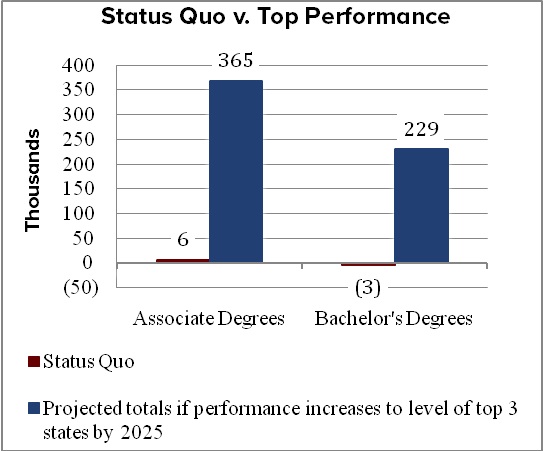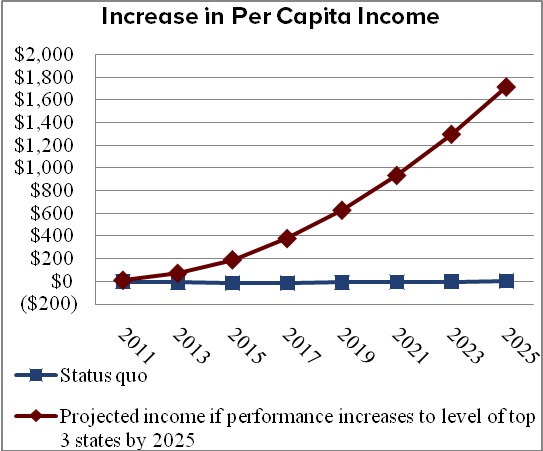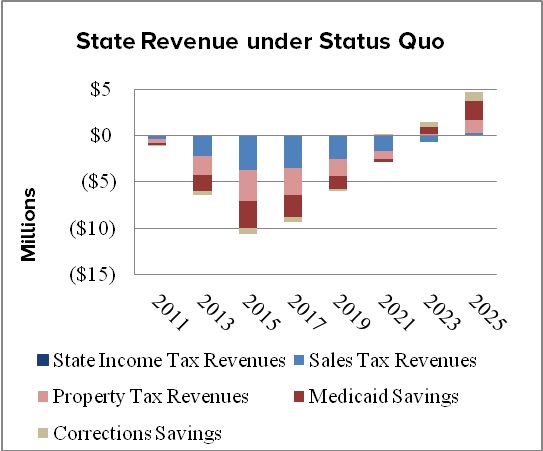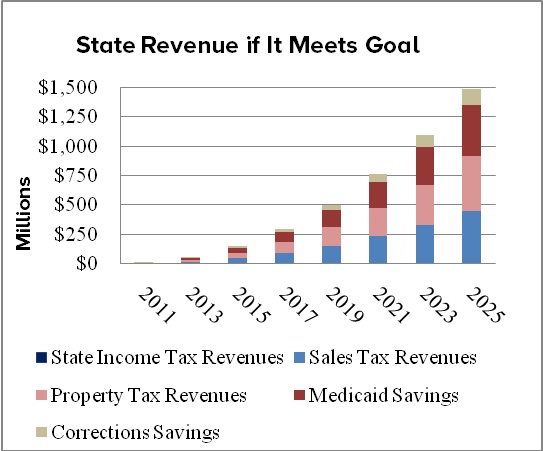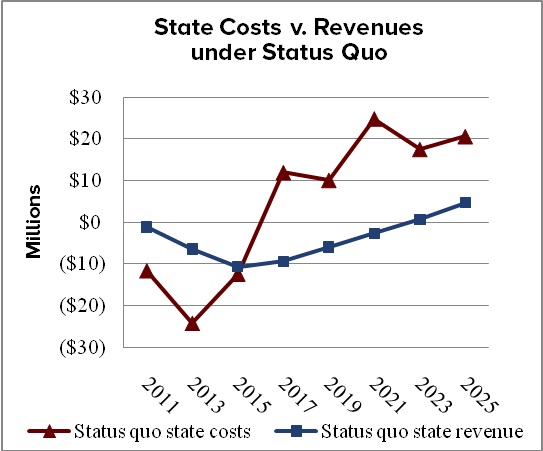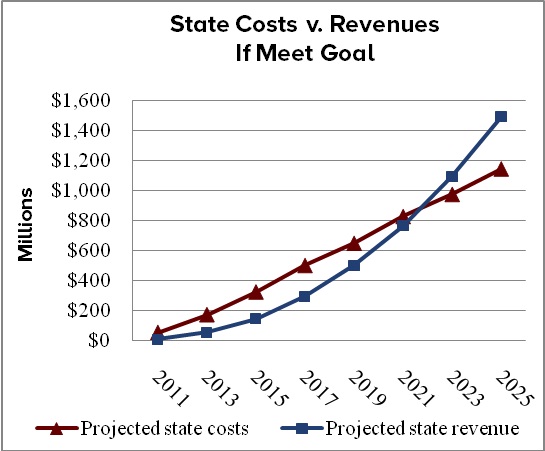Washington: The Return on Investment to Increasing Postsecondary Credential Attainment
Visit the Washington Return on Investment dashboard tool >>
(NOTE: Dashboard takes a few seconds to load)
|
Washington Must Improve College Participation and Credential Attainment Rates to Remain Competitive |
|
|
|
|
Meeting Credential Goal Produces Significant Personal Economic Return |
|
|
Per capita income increases when the state meets 60% credential attainment goal
|
|
|
Meeting Credential Goal Produces Significant Economic Returns to the State |
|
|
Status quo produces small returns Under current postsecondary investment patterns, Washington’s state revenues will increase by about $4 million in 2025.
|
Meeting 60% credential goal pays off By meeting the 60% credential goal, Washington will generate more annual revenue, topping approximately $1.4 billion in 2025.
|
|
State Revenues Exceed Costs When Credential Goal is Met |
|
|
Status Quo: Costs exceed revenues Under current postsecondary investment patterns, Washington’s postsecondary costs exceed revenues by about $15 million by 2025.
|
Meet 2025 goal: Revenues exceed costs By meeting the 60% credential attainment goal, Washington’s revenues exceed postsecondary costs by about $340 million by 2025.
|
|
This analysis was prepared using the CLASP-NCHEMS Return on Investment Dashboard tool. See clasp2022.tealmedia.dev/ROIdashboard |
|
